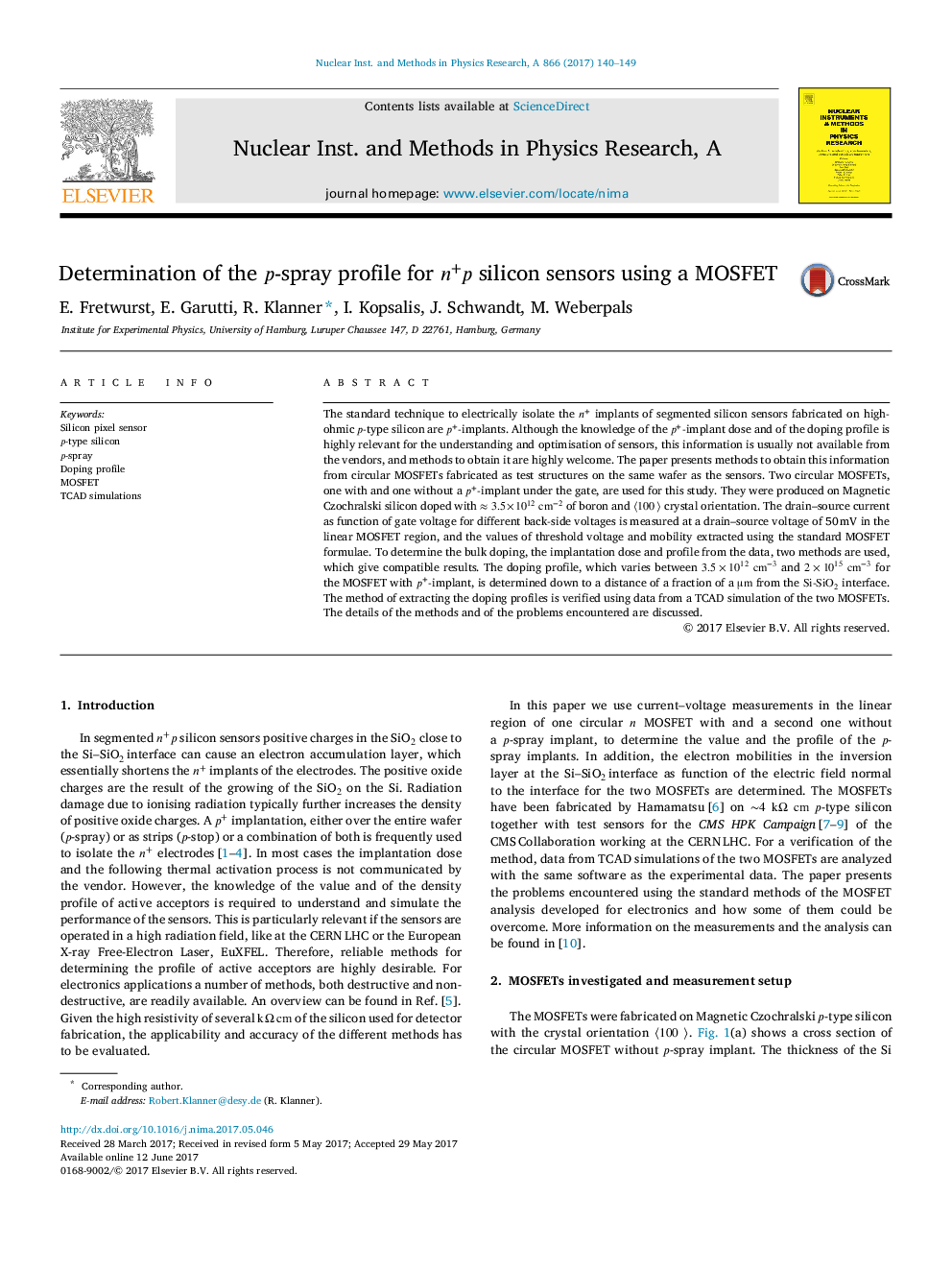| Article ID | Journal | Published Year | Pages | File Type |
|---|---|---|---|---|
| 5492949 | Nuclear Instruments and Methods in Physics Research Section A: Accelerators, Spectrometers, Detectors and Associated Equipment | 2017 | 10 Pages |
Abstract
The standard technique to electrically isolate the n+ implants of segmented silicon sensors fabricated on high-ohmic p-type silicon are p+-implants. Although the knowledge of the p+-implant dose and of the doping profile is highly relevant for the understanding and optimisation of sensors, this information is usually not available from the vendors, and methods to obtain it are highly welcome. The paper presents methods to obtain this information from circular MOSFETs fabricated as test structures on the same wafer as the sensors. Two circular MOSFETs, one with and one without a p+-implant under the gate, are used for this study. They were produced on Magnetic Czochralski silicon doped with â3.5Ã1012cmâ2 of boron and ã100ã crystal orientation. The drain-source current as function of gate voltage for different back-side voltages is measured at a drain-source voltage of 50  mV in the linear MOSFET region, and the values of threshold voltage and mobility extracted using the standard MOSFET formulae. To determine the bulk doping, the implantation dose and profile from the data, two methods are used, which give compatible results. The doping profile, which varies between 3.5Ã1012cmâ3 and 2Ã1015cmâ3 for the MOSFET with p+-implant, is determined down to a distance of a fraction of a μm from the Si-SiO2 interface. The method of extracting the doping profiles is verified using data from a TCAD simulation of the two MOSFETs. The details of the methods and of the problems encountered are discussed.
Related Topics
Physical Sciences and Engineering
Physics and Astronomy
Instrumentation
Authors
E. Fretwurst, E. Garutti, R. Klanner, I. Kopsalis, J. Schwandt, M. Weberpals,
